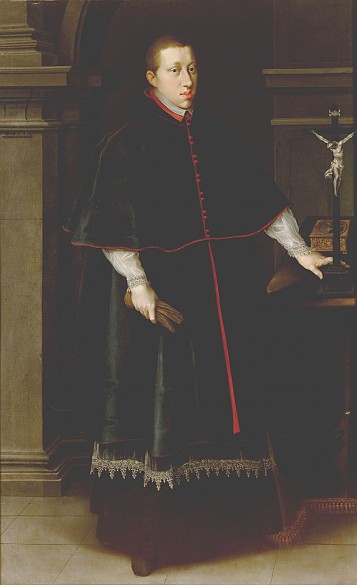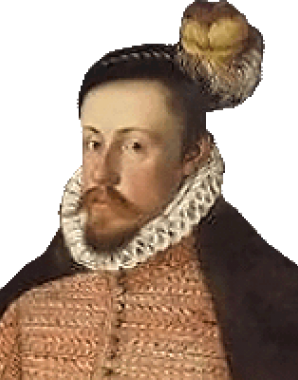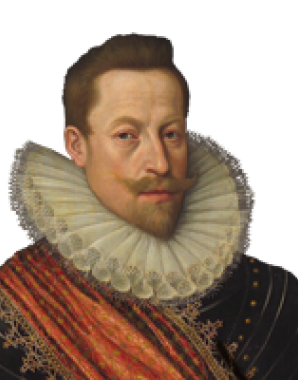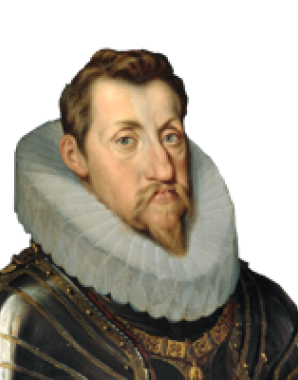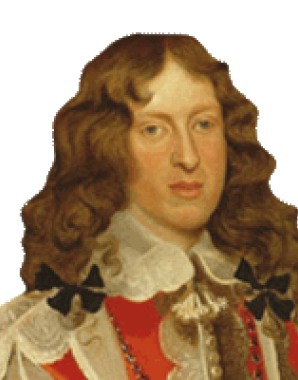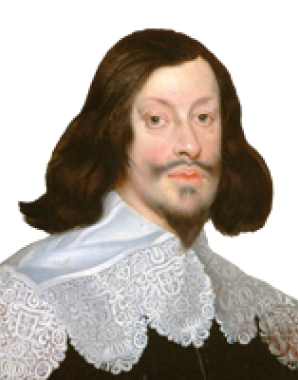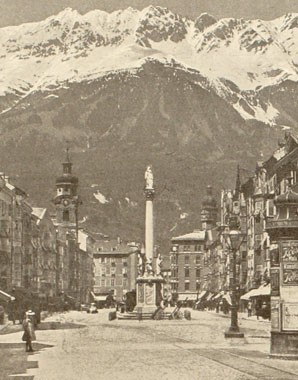Archduke Leopold V: from prince of the Church to founder of the collateral Tyrolean branch of the Habsburg dynasty
Born in 1586, Leopold was the twelfth child of Archduke Charles of Inner Austria and Maria of Bavaria. Brought up at the strict Catholic court in Graz, the archduke was strongly influenced by his extremely pious mother. A career as a prince of the Church suggested itself, since as a later-born son he had little chance of a throne.
A scion of the collateral Styrian branch of the dynasty, he was appointed prince-bishop of Passau at the tender age of twelve, and was entrusted with a second bishopric, that of Strasbourg, at twenty-one, without ever having been ordained. In this devoutly Catholic dynasty, however, it was quite common for later-born sons, regardless of aptitude and even if they had not received holy orders, to be given richly endowed positions in the high clergy, in order to provide them with an income commensurate with their standing.
Leopold was ambitious but often lacked judgement: he believed he was being helpful to his cousin, Emperor Rudolf, in sending a mercenary army to Bohemia in order to support him in his struggle against his brother Matthias and the demands of the Estates. Known as the ‘Passauer Kriegsvolk’, these poorly paid mercenaries instead started marauding in Bohemia, a turn of events that compromised Rudolf hopelessly and led to him losing the last remnants of his power.
In 1619 Leopold was entrusted with a new task: he was ordered to Tyrol as the representative of his brother, the new emperor Ferdinand II. There the ambitious Leopold staked a claim on the lordship of Tyrol, which Ferdinand granted him after some hesitation. From 1623 to 1630 he achieved the hereditary position of sovereign in stages. To strengthen his newly acquired status the archduke sought to found his own dynastic line. For this he would have to get married, even though it meant relinquishing his ecclesiastical offices. In 1626, having returned to the secular state, Leopold married Claudia de Medici (1604–1648), the daughter of Grand Duke Ferdinando I of Tuscany.
This was Claudia’s second marriage. After the death of her first husband, an Italian aristocrat, shortly after they were married, the nineteen-year-old widow had entered a convent. With her second husband Leopold, the former bishop, she had five children, including two sons, Ferdinand Karl and Sigismund Franz, who were to follow their father as rulers of Tyrol. The youngest of their three daughters, Maria Leopoldina, became the second wife of her first cousin, Emperor Ferdinand III.
Leopold died in 1632 and was interred in the Jesuit Church in Innsbruck that he had endowed and where he had had a family crypt built for his descendants.
His widow initially headed the tutelary regency for her first-born son, who was still a child, guiding her country with great skill through the final phase of the Thirty Years’ War.
Claudia de Medici was also responsible for bringing a rich influx of Italian culture over the Alps, as a result of which Innsbruck came to possess the first opera house to be built in the German-speaking lands.
